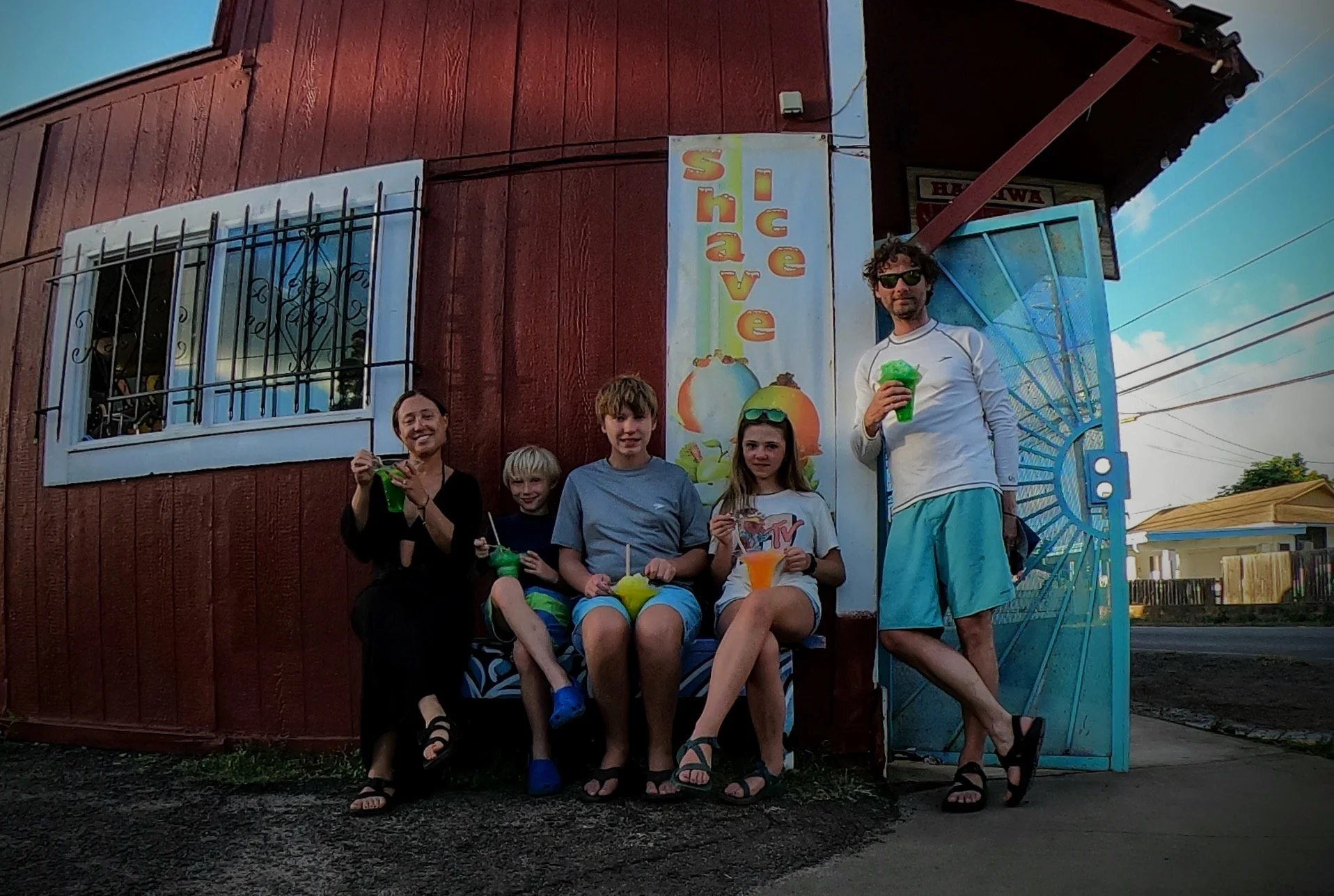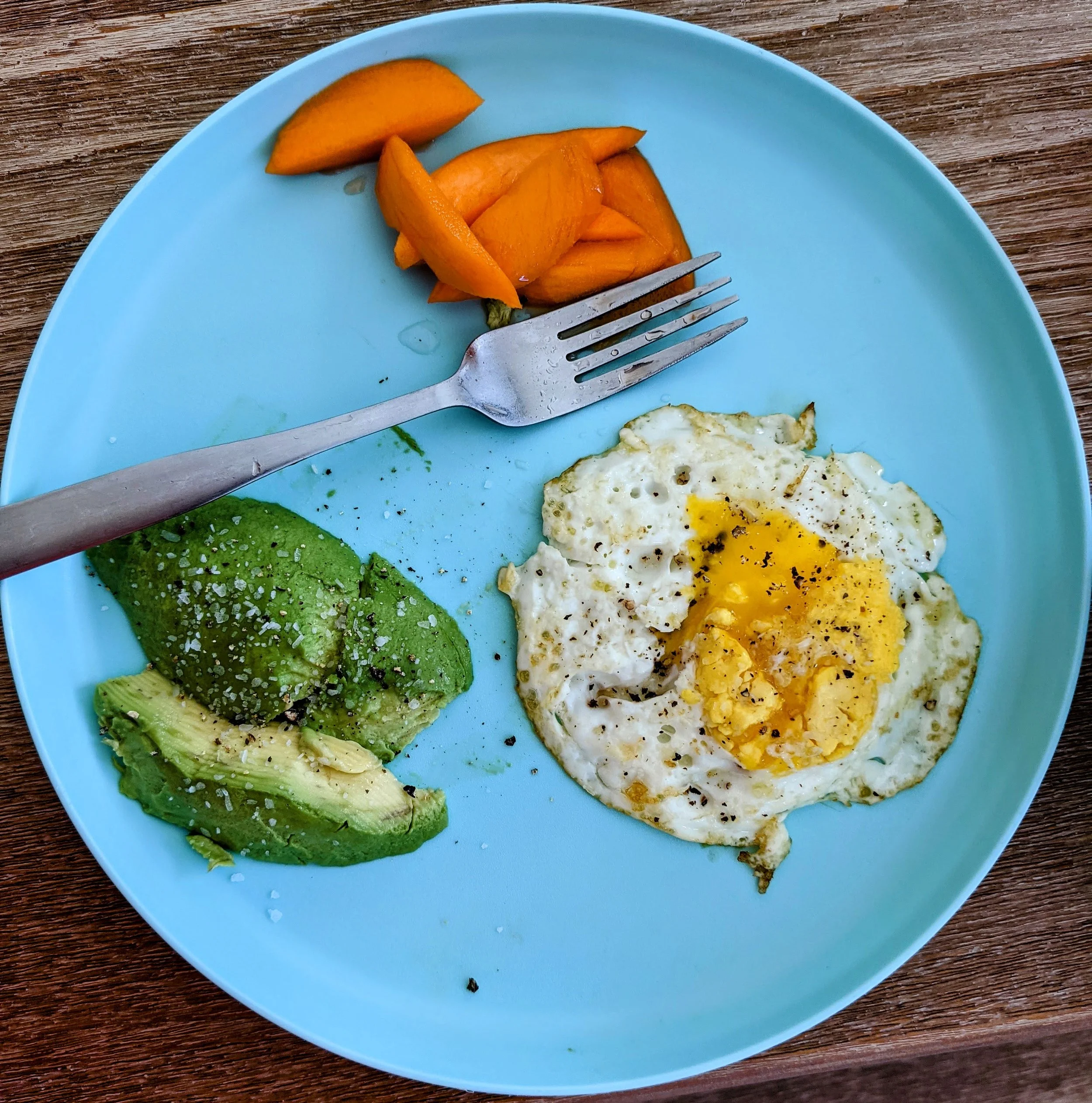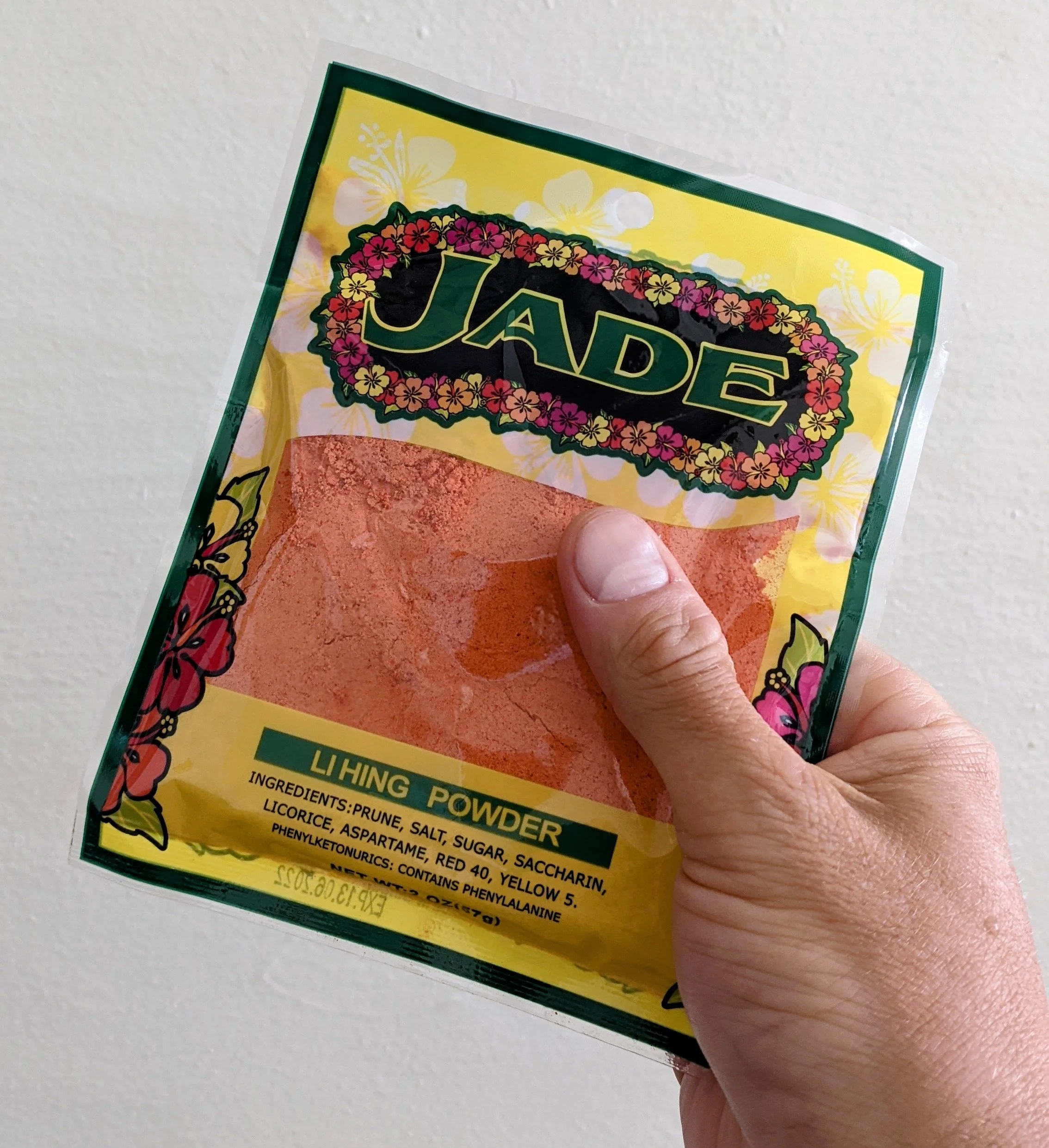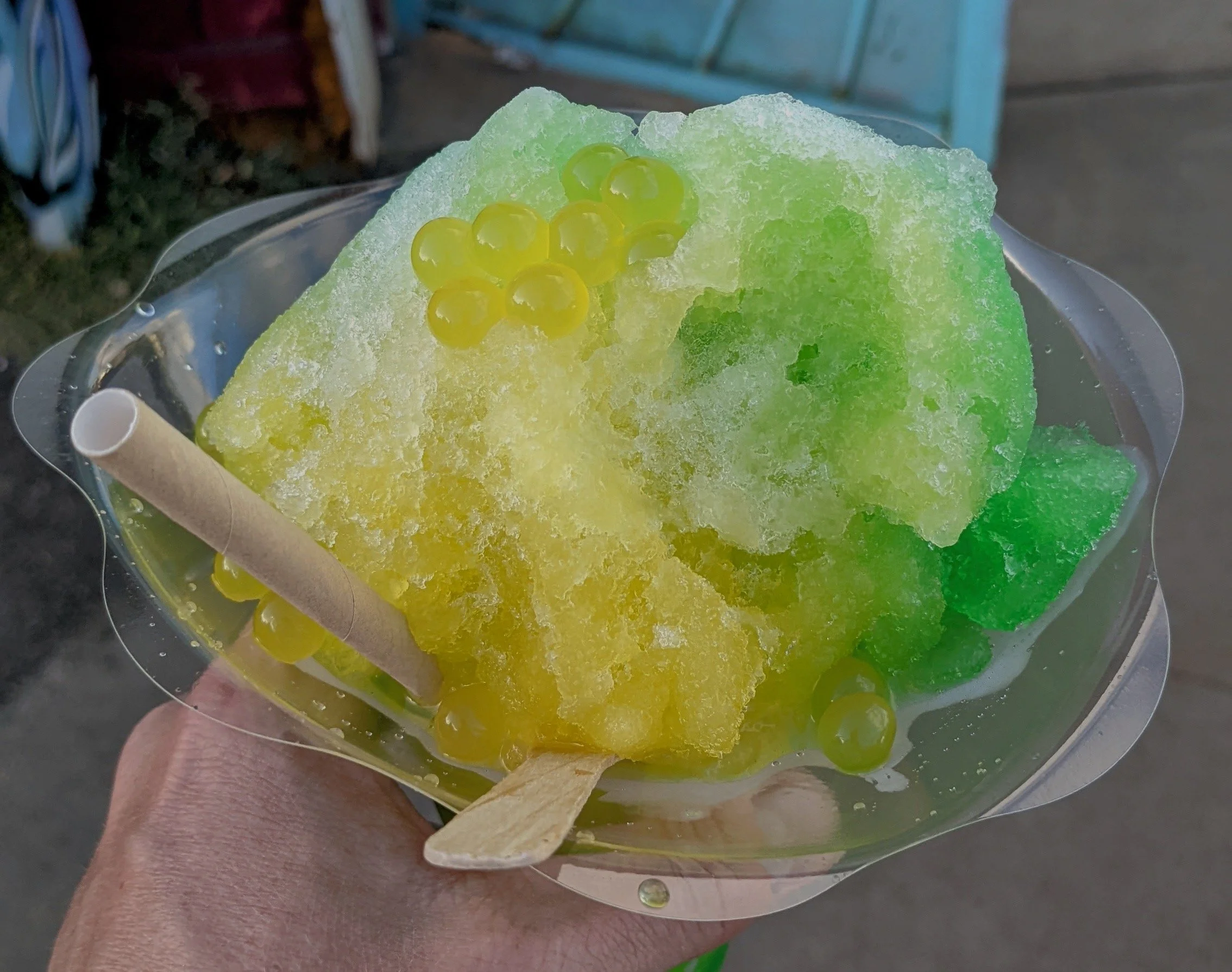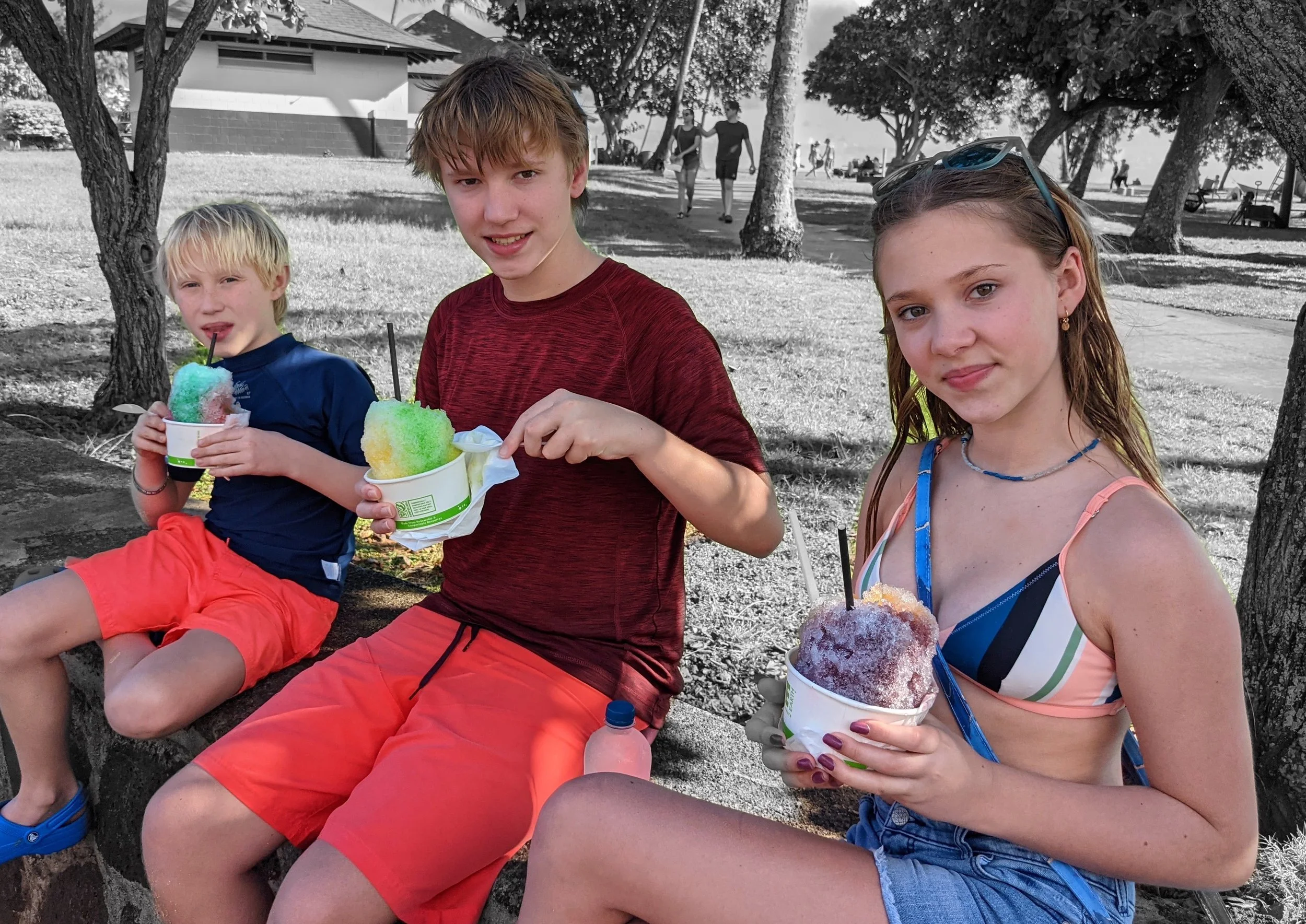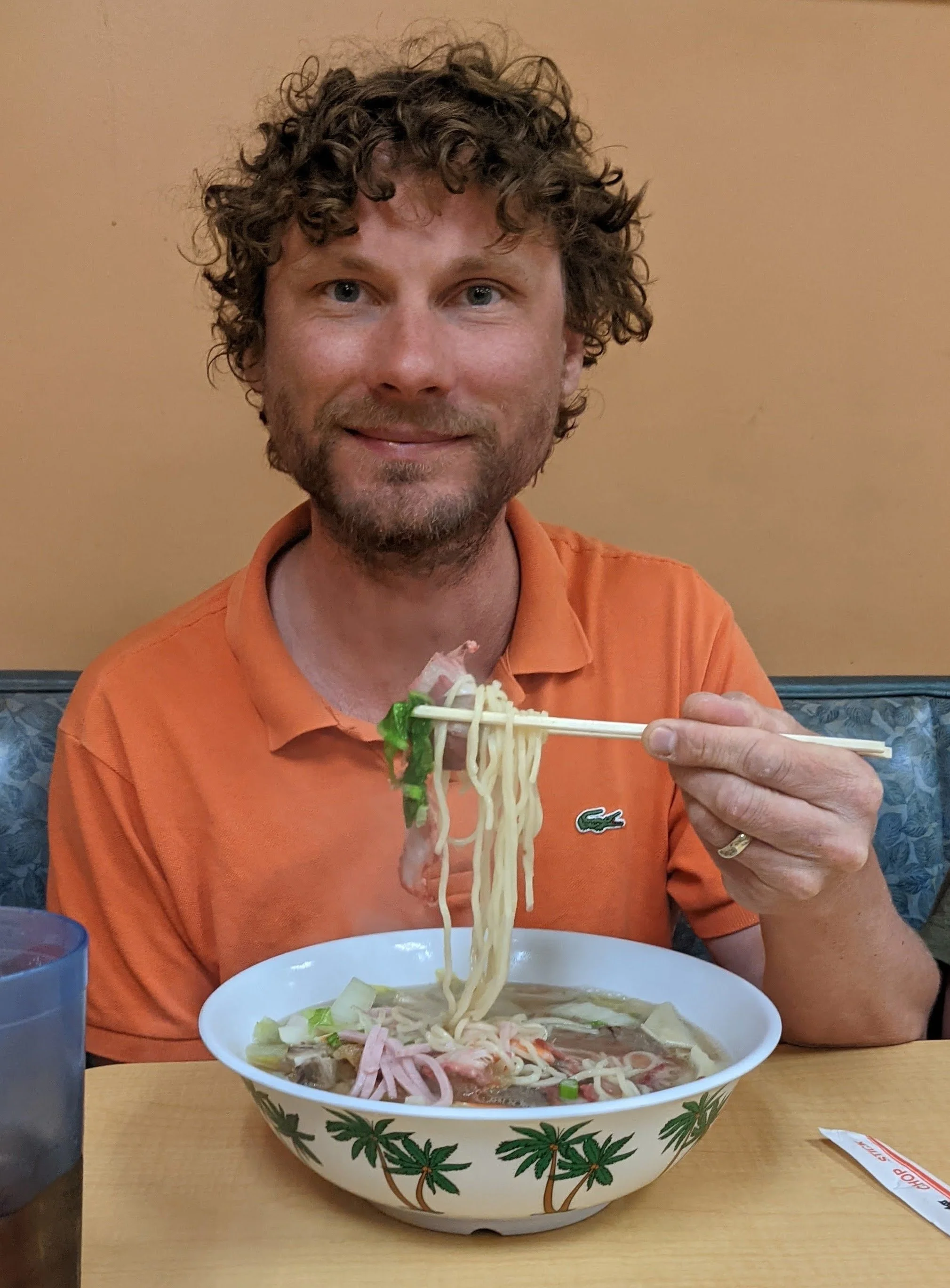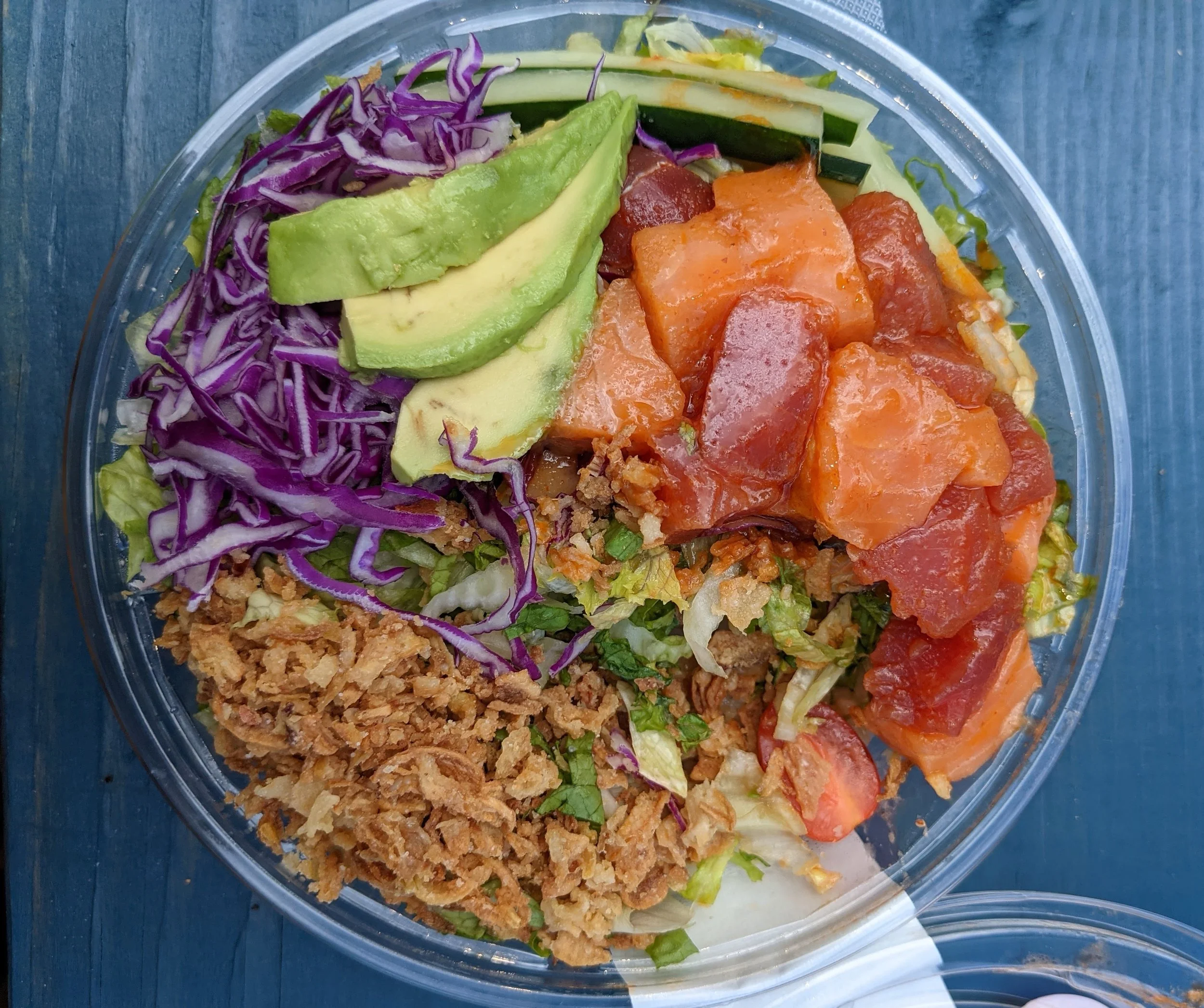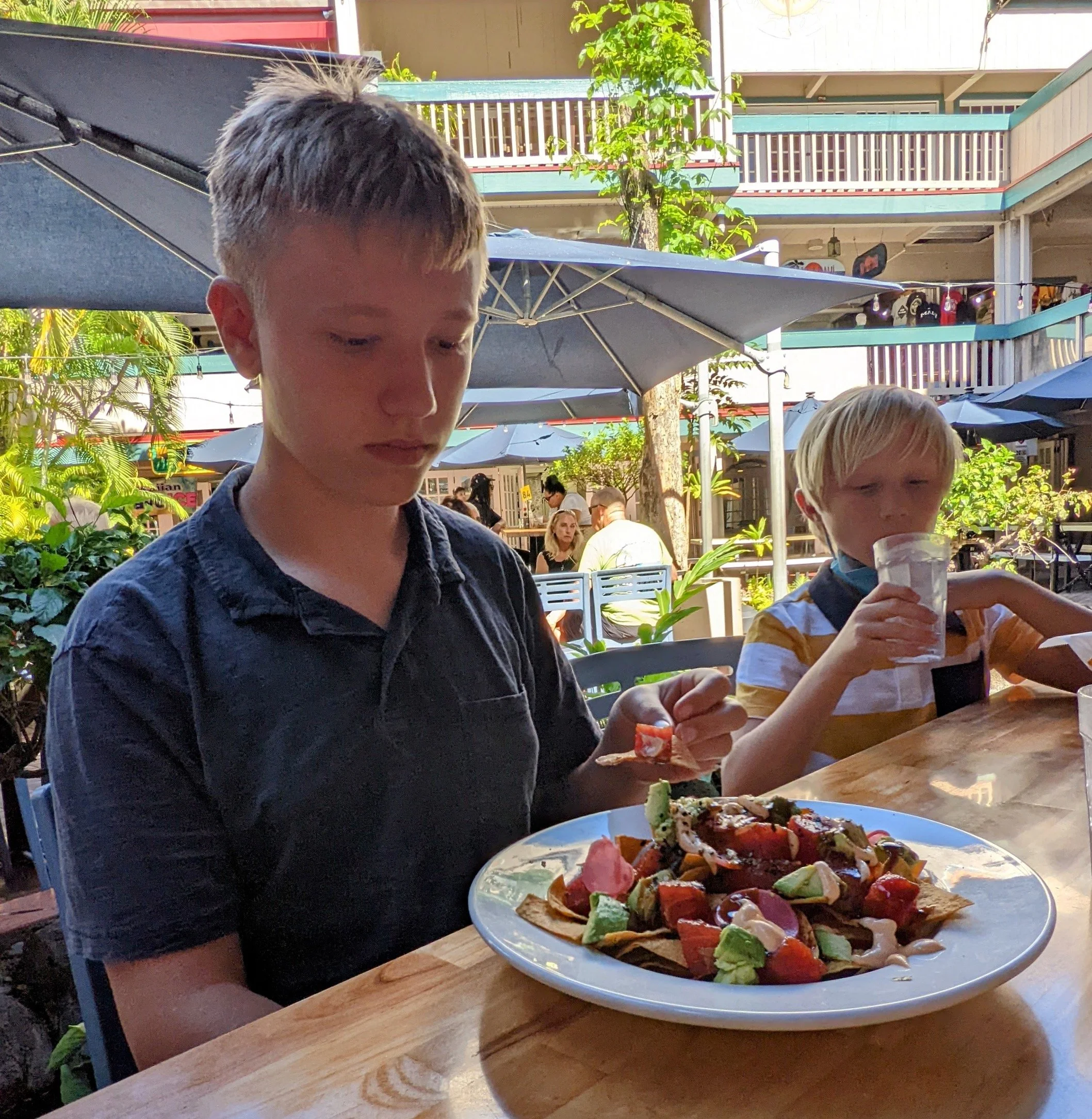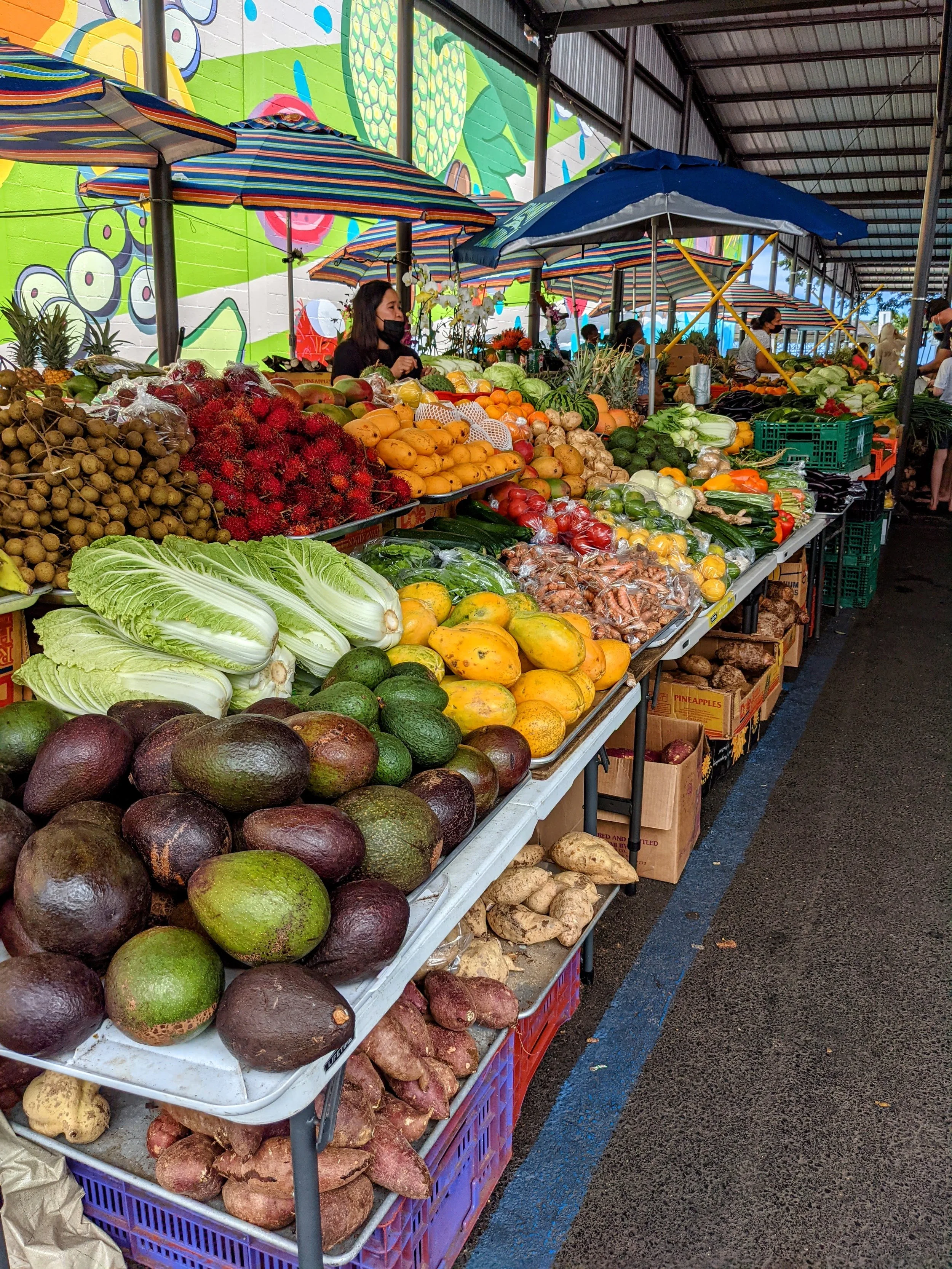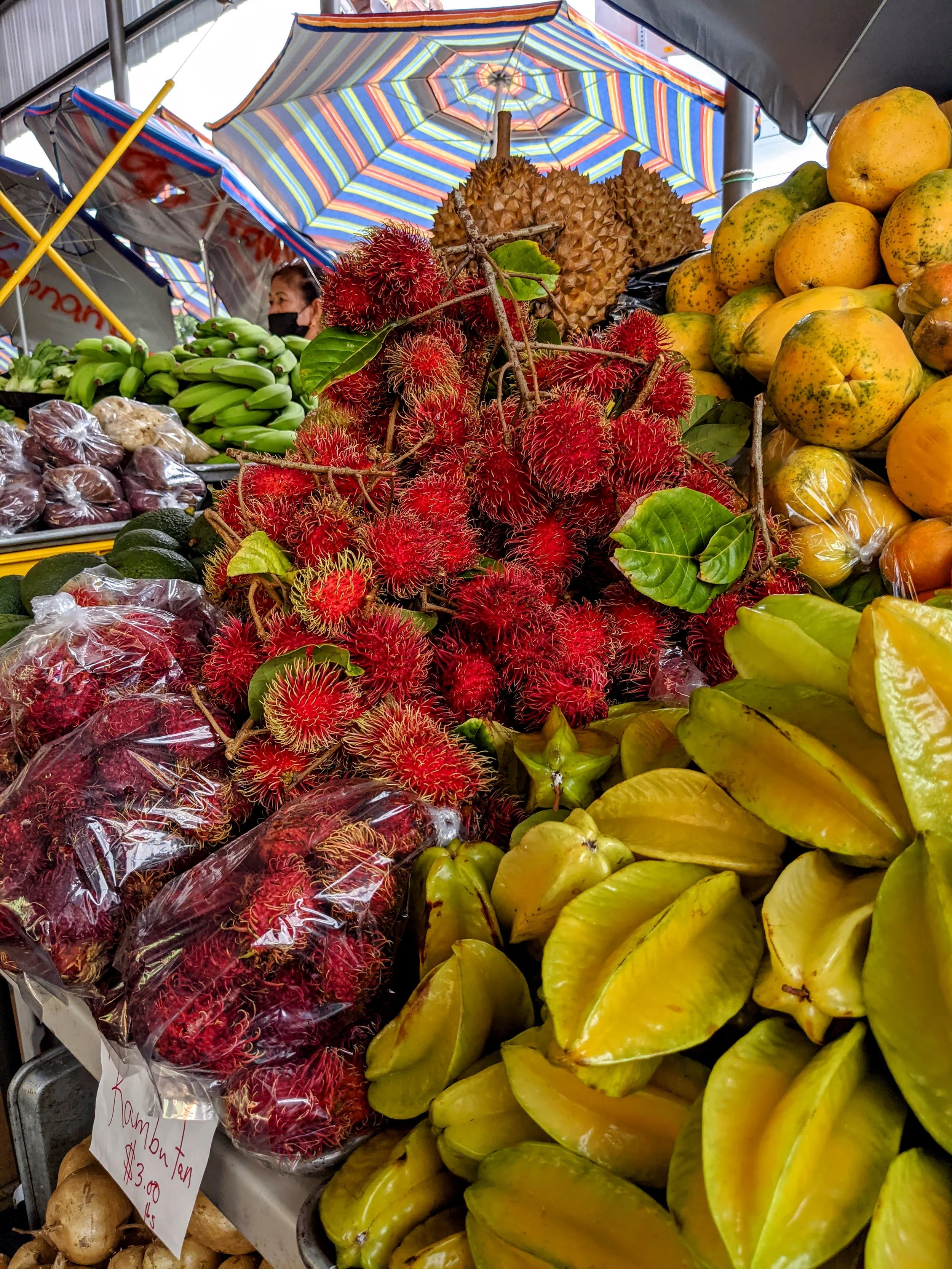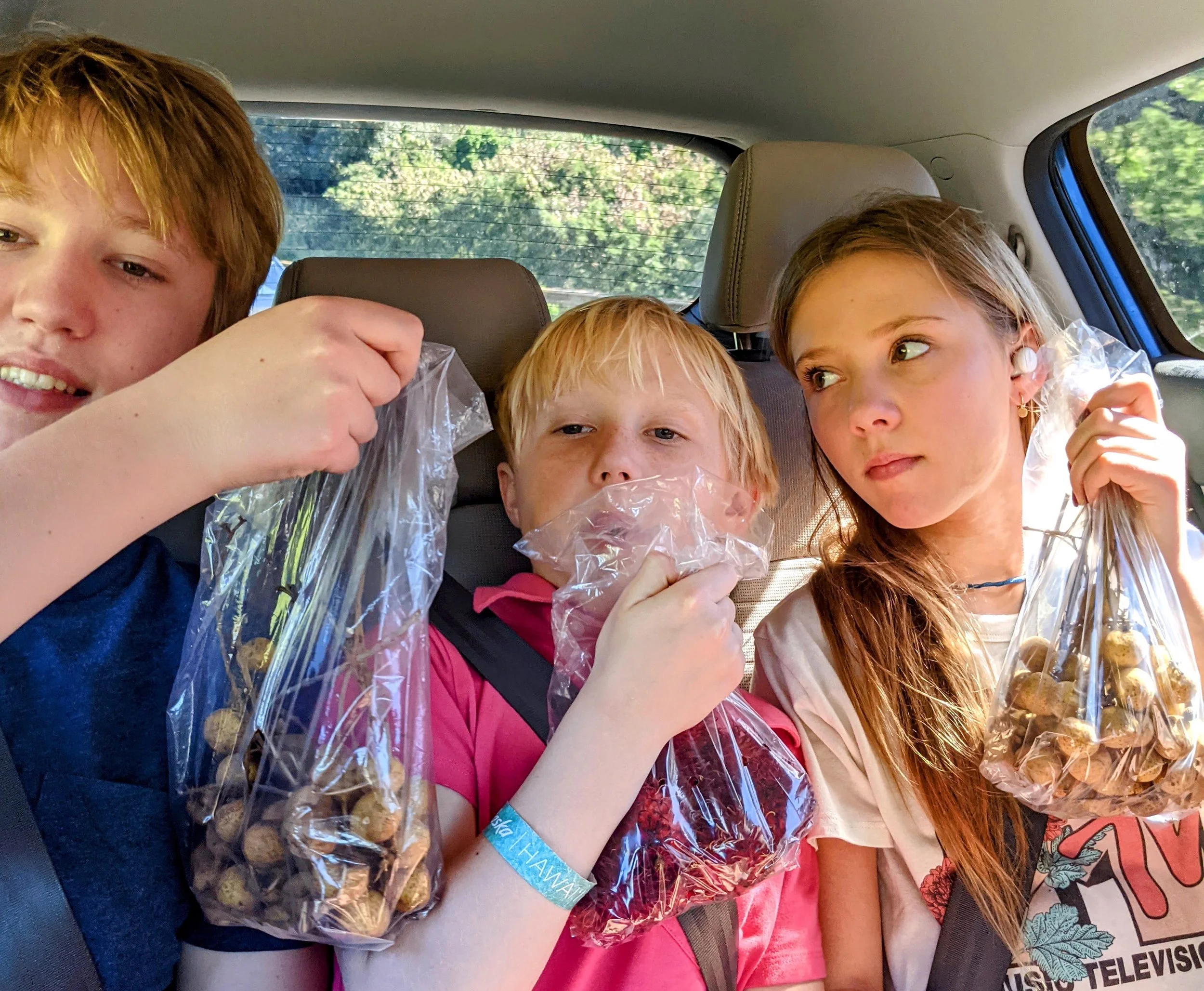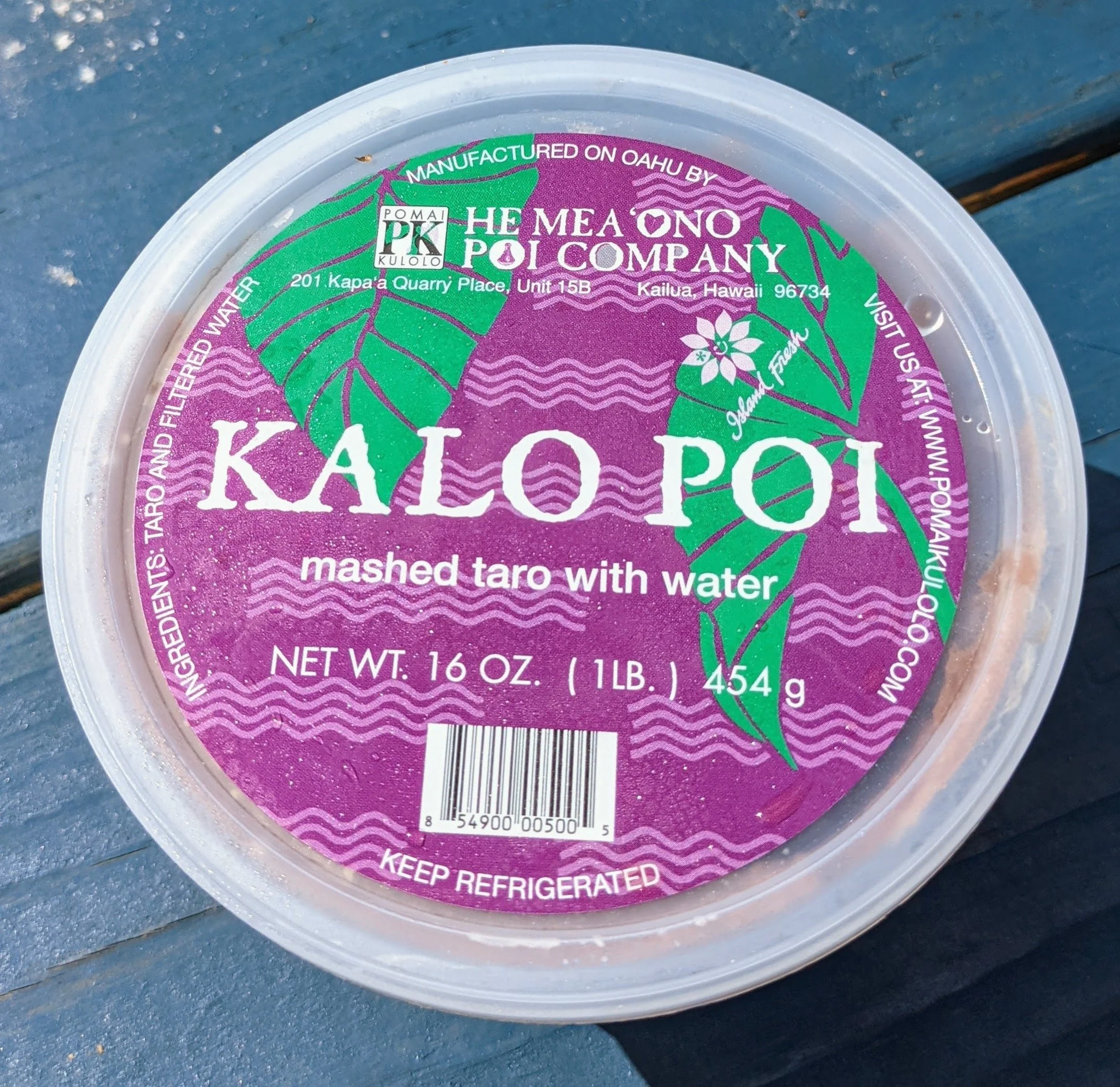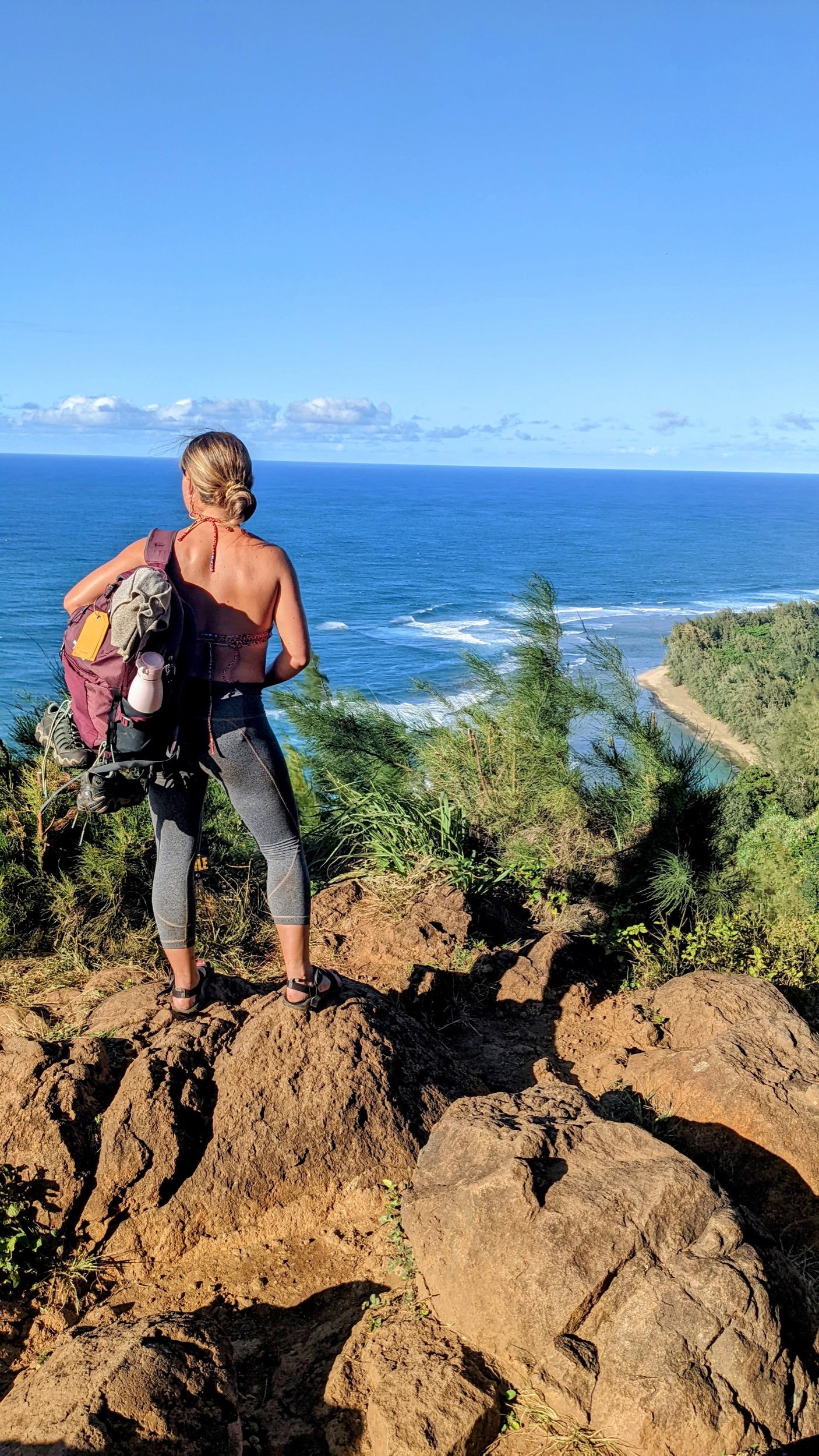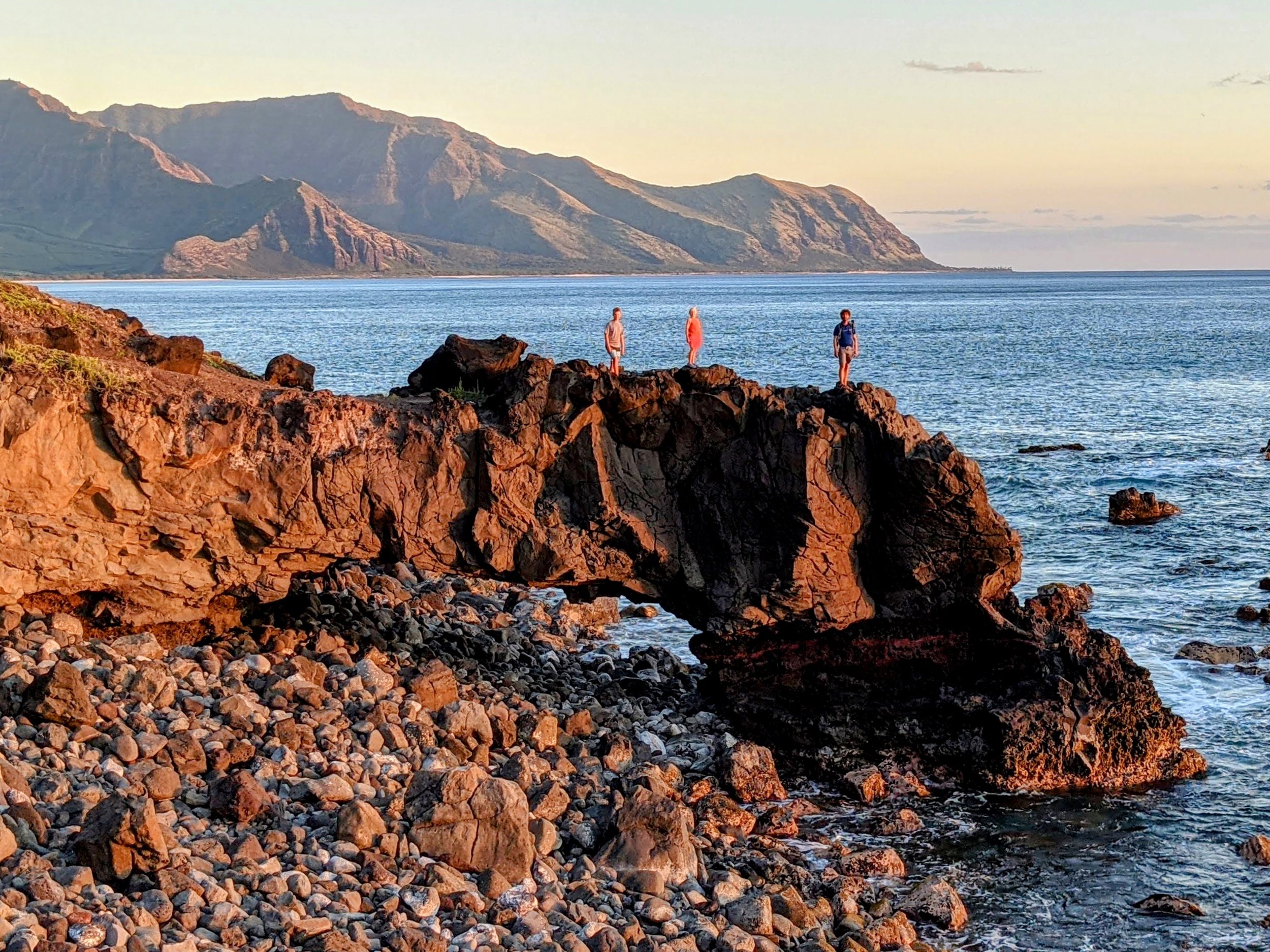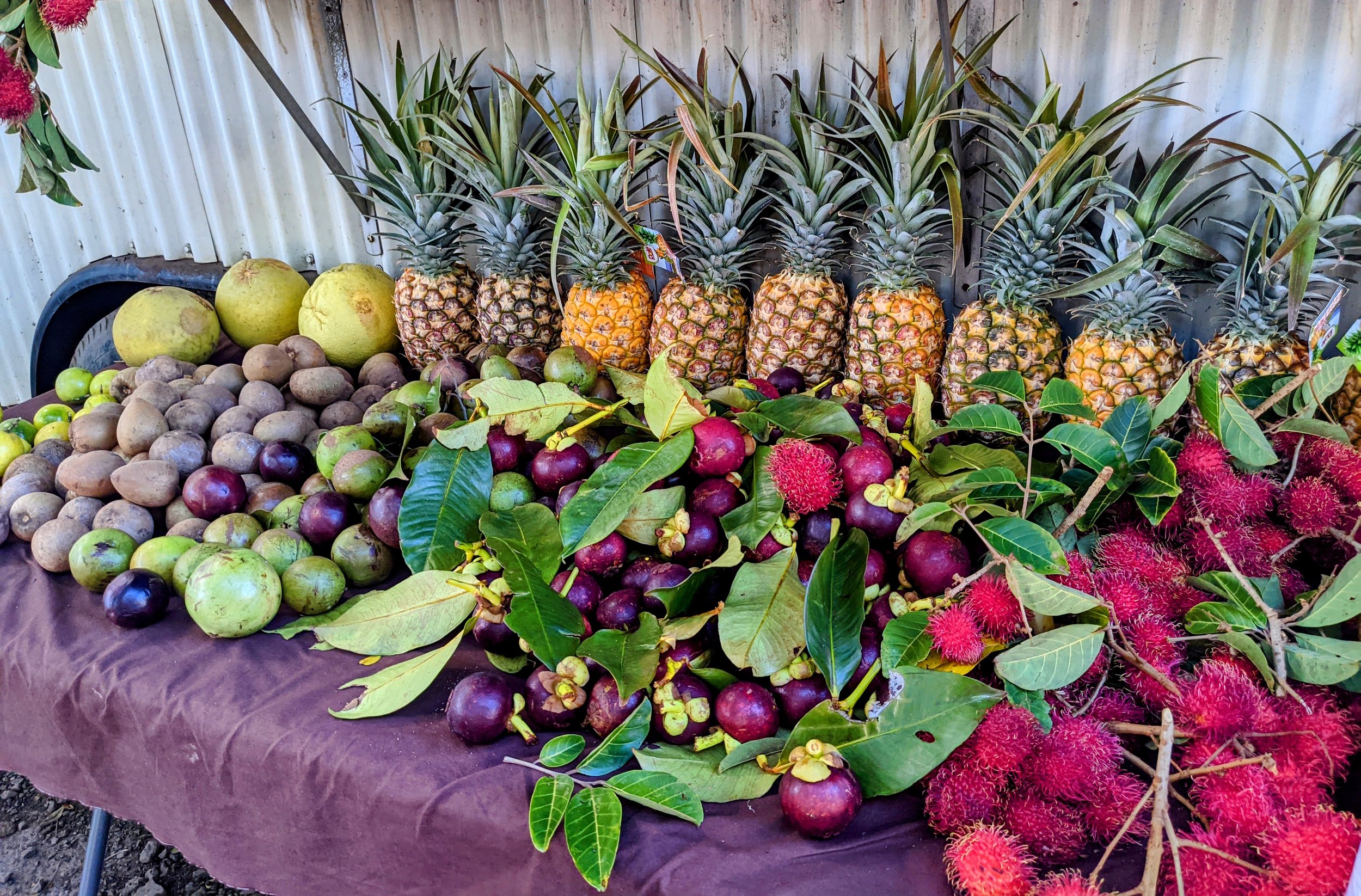7 Foods to try in Hawaii: Deliciousness and Diversity
7 Foods to try in Hawaii
Hawaiians should get more credit for their food. They have a reputation for eating Spam, a canned meat product, and it is true that Spam is eaten with much greater frequency here than in other US states, but I feel like their appreciation of Spam really overshadows their unique and complicated cuisine. Just like the Hawaiian people are a melting pot of Asian, Pacific Island, and American cultures, Hawaiian cuisine incorporates and takes the best from all of these culinary traditions. Mix that up with tons of fresh fish and fresh fruit and you have a cuisine to match the scenery. Hawaiians have also embraced the food truck, the roadside stand, and the divey fast casual joint, so some of the best Hawaiian dishes are found in unassuming digs and won’t break the bank. Here is a sampling of some of the uniquely Hawaiian foods we have tried so far.
Pickled Mangoes
Where have you been all of my life? It’s what every fish taco has been missing and the perfect mix of sweet and salty. They are great by themselves but I have also put them on pork sandwiches, avocado toast, and fish tacos. They bring an amazingly sweet and salty combo with a refreshingly cool crunch. Pickled mango is not a uniquely Hawaiian tradition and can be found in other Asian and Pacific Island cuisines; however, the specific balance of sweet and tart flavors in the Hawaiian pickled mangoes make them unique. The secret ingredient is Li hing mui powder, which also didn’t originate in Hawaii but has been fully adopted here.
Li Hing Mui Powder
Li hing mui powder is made from ground up dried plum skins which are pickled with licorice, red food coloring, sugar, salt, and aspartame or saccharin. There is nothing natural about it. The powder itself is eaten here on all sorts of things: fruit, shave ice, candy, cocktails. It has an incredibly weird but somehow pleasing flavor that is sweet, sour, and salty all at the same time and makes you want more (possibly in a chemical induced, unhealthy sort of way). The mangoes are pickled while they are green, giving them a lovely crunch to accompany the flavor. If you are lucky, you can find pickled mangoes at roadside stands or farmer’s markets. I’m going to learn to make these because I will not go the rest of my life without having them. If you ever get a chance to try them, do it.
Shave Ice
Yes, it is Shave Ice, not shaved ice, and it originated here in Hawaii when Japanese plantation workers would shave pieces of ice off a block and coat it with fruit juice or sugar in the 1800’s. In the Pidgin vernacular on the island it became known as “Shave Ice”. Some Japanese families then began selling it in general stores during that time and it evolved into the beautiful, delicious, perfect treat for the hot Hawaiian days that it is today.
It's similar to the snow cones we enjoy on the mainland, but Hawaiians take it so much farther. First and foremost, the ice is shaved, resulting in a light, snowy consistency that holds the syrup much better than the classic tiny ice ball consistency of snow cones (think snow instead of sleet). Secondly, there is a wide variety of syrup flavors and types. Some shave ice establishments make their own syrups from fresh fruit, such as Kula Shave Ice in Hilo. Most go with the classic, colored, artificially flavored sugar water that we all know and love. Finally, and most importantly, you can top your Shave Ice with an array of toppings. Our family favorite is popping Boba, which gives the Shave Ice a fun and unique consistency. We have also tried sweet cream and ice cream. Others include butter mochi, Li hing mui powder (see above), fresh fruit, and so many more.
We have tried the shave ice at Puka Dog in Poipu, Aoki’s Shave Ice in Haleiwa, and Kula Shave Ice in Hilo. We liked the ice consistency at Puka Dog, the toppings and fat straws at Aoki’s, and the homemade syrup at Kula. We plan on trying many more. They are all unique and delicious!
Saimin
Saimin is the Hawaiian version of noodle soup, consisting of wheat egg noodles, broth, and a variety of toppings. Of all the foods discussed so far, this is the only one that is uniquely Hawaiian. From what I can tell, this is a mix of Japanese Ramen, Chinese noodles, and any toppings you could possibly think up. The origins are unclear. One popular origin story involves plantation workers from Chinese, Japanese, Korean, and Portuguese origins all having lunch together and creating this noodle soup by each contributing what they had: broth from the Japanese workers, noodles from the Chinese workers, some Portuguese sausage, and green onions from the Korean family gardens. Although this is a lovely origin story, many believe it is highly unlikely, given extreme racial tensions and segregation during that time.
The word Saimin comes from the combination of two Chinese words, meaning small and noodle, but it is not a word used in China. As a result of this, many credit the Chinese Hawaiians with the creation of Saimin in Hawaii. Others think the Japanese immigrants should get the credit, given the similarity to Ramen. Saimin, however, seems to pre-date the popularization of Ramen in Japanese culture, making this theory less likely.
Regardless of its origins, Saimin is noodle soup, often served with green onions, fish cakes (kamaboka), nori (dried seaweed), boiled eggs, and Spam. The noodles are more like Chinese egg noodles than the straight noodles used in Ramen. The secret to each establishment’s unique Saimin is the broth. Here are a few important things I have learned about ordering Saimin:
1. If Chinese dumplings are added to the Saimin, it’s called wonton min.
2. If the Saimin includes Hamburger, Teriyaki Chicken, Lumpin (egg rolls), or other meats that don’t sound like they would go well in noodle soup, those things are served on the side. Think of these more like a combo meal.
3. Fried Saimin is basically Lo Mein noodles.
Overall, Saimin is a quick, hearty, warm meal that you can get just about anywhere here in Hawaii. We tried Shiro’s Saimin which was pretty tasty and accompanied by friendly service in an unassuming location.
Poke
Hawaiians get all the credit for this one. According to Wikipedia, Poke is an American regional based cuisine from Hawaii. Poke is the Hawaiian word for “to slice” and poke originated from Hawaiian fishermen who would skin, debone, slice, and marinate fish to serve as a snack. Other cultures can claim similar raw fish dishes but poke is unique for two reasons: 1. Citrus is not used to cure the fish. 2. The unique combination of limu (algae), candlenut paste, Hawaiian sea salt, and seaweed used in poke originated in Hawaii. It can be served with or without rice.
Poke has grown massively in popularity and complexity since it’s early conception. You can find poke at most restaurants, in counter service type establishments, and in all the grocery stores here. For our family, poke has been somewhat elusive and we have failed at obtaining it multiple times. Places have weird hours and close early here, which does not work well with our “no bedtimes” style of living. After accidentally getting ourselves locked inside a state park (for more on that, see future blog post on Yokohama Bay), we decided to stop at Safeway for a quick dinner of poke. Turns out Safeway stops serving poke at 8. Similarly, we attempted to get poke at KTA on the big island for lunch, only to find they don’t serve their poke with any rice or toppings. We have tried the poke at Safeway (after a second attempt), The Dolphin in Poipu, The Hula Grill in Waikiki, and Down the Hatch in Lahaina, and they were all delicious. The surprising winner so far is the Safeway poke bowl but we still have a lot of poke left to try!
Fruit in Hawaii: Not Native, but Amazing
Hawaii provides the perfect, sunny climate for growing fruit and fresh fruit is wonderfully abundant here. Interestingly, most of the fruits we associate with Hawaii, such as pineapple, mango, passionfruit, papaya, and many others are not native to Hawaii. Having sprung up in the middle of the Pacific ocean from a hot spot in the earth’s crust and never having been attached to any other continent, very few plants and animals were able to make the voyage to these geographically isolated islands on their own. When the early settlers of Hawaii arrived here on their long canoes, there were almost no edible plants. Oral histories indicate that they brought 24 plants with them on their canoes and thus began the history of fruit in Hawaii.
Now there are prolific fruit stands on the side of the road and farmers markets displaying rows and rows of colorful and strange fruits. We have tried passionfruit, longhans, rambutans, apple bananas, papayas, kumquats, starfruit, guava, and egg fruit. Longans and rambutans are the family favorites so far. Both are very similar to lychees with slightly different flavors and sweetness. I highly recommend visiting a farmers market in Hawaii so that you can try some strange fruits on your visit and see the colorful stands.
Poi: The Polynesian Starch
Poi is a food that originated in the Polynesian islands and was brought to Hawaii when the early settlers arrived from the Pacific islands. It consists of ground up starch, either taro, breadfruit, or plantain, mixed with water. It can be eaten immediately or fermented and eaten once it develops a more sour taste, like yogurt. To be perfectly honest, I don’t get this one. The flavor is bland and the texture is pasty and unpleasant. I’m guessing this was a good source of calories for native people and it still holds a sacred place in Hawaiian culture, but it is lacking in the modern day culinary sense. It’s worth trying due to its cultural importance alone, but I won’t be getting seconds.
Conclusion: Endless Foods to Explore in Hawaii
There are so many other foods I could talk about; Kalua pork, kona coffee, acai bowls, loco moco, abundant Thai, Korean, Japanese, and Chinese restaurants, Boba tea stands that are more common than Starbucks, some of the best cheeseburgers and pizza I have tasted, and the best sushi in America. I could go on and on about Hawaiian food, but I have to stop somewhere! As a regional American cuisine, Hawaii has an amazingly unique, varied, and delicious food culture. I recommend sampling as much as possible when you visit!
Share your favorite Hawaiian foods and any restaurants you think we should try in the comments.
